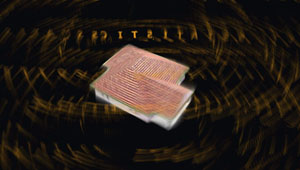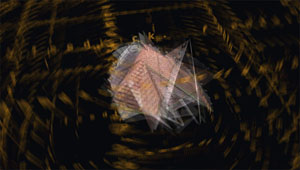"every new project modifies all the elements that try to contextualize it, and provokes contextual mutations, just like a Takamatsu machine. In this sense, a building project resembles much more a complex ecology than it does a static object" Yaneva and Latour 2008
A house, for all intense purposes, looks like a static object. But a house is actually in constant movement, made up of and indeed constantly altered by many intersecting and dynamic interests from both within and without. In this way a house is seen as a navigation through a negotiated datascape, and a contested gathering of many conflicting demands. This work attempts to show how various trajectories of data that surround and indeed intersect with a house render it as a moving project.

When a house is examined as a collective thing, run through with the trajectories of competing interests, it begins to take on the aura of something more like a complex ecology than a static object (Yaneva Latour 2008). To consider a house as static, is to hold it frozen in representation as if wrapped in cling wrap and thus separate from those 'external' connections that make it a house. As Yaneva and Latour state (2008 p87),
Everybody knows—and especially architects, of course—that a building is not a static object but a moving project, and that even once it is has been built, it ages, it is transformed by its users, modified by all of what happens inside and out side, and that it will pass or be renovated, adulterated and transformed beyond recognition.

A house's truest form must therefore be one that is in constant flux, forever subject to the wilful vagrancies of those actors in which it must constantly transact in order for it to maintain its shape - and be called a house.
In contrast Gaston Bacehelard considered houses to be important because humans live in them. He described this kind of personal and subjective relation with a house as central to all buildings because not only do they offer subjects refuge from the outside world, but all... inhabited space bears the essence of the notion of home (1938 Bachelard, p5). So not only does the house connote a distance between the private and the public but also provides a convenient separation of the social from the psychological.

Bachelard also believed that the house centres the subject, offering protection and shelter, albeit in a illusionary way. More to the point, for Bachelard, is the way the house serves this purpose "In the life of a man, the house thrusts aside contingencies, its councils of continuity are unceasing. Without it man would be a dispersed being" (2004 King, p6). In this fashion houses offer privacy, stability, intimacy, refuge, security and connote preserving and conserving what 'you' have with as little change as possible (2004 King, p36).
The contradiction in Bachelard's description of the house is subtle but no less important. On the one hand Bachelard describes a house by the way it provides a constant unchanged refuge by supposedly sheltering us from those very connections, networks and actors that work together to make a house, a house. More to the point is the way Bachelard recognises that because a house offers an unceasing continuity of refuge from the world a "man would be a dispersed being" without it. So a man is made whole because the house provides a space of refuge separate from the outside world? Isn't it more that a man is made more human and a house is made more habitable because of the connections to the oustside?

Bachelard's attempt at describing the house as a separate entity, ( or as a tool that shuts out the world) works in much the same way that an architect's drawings supposedly describes a house; and in doing so leaves out too many dimensions. If a house occupies a kind of poetic space, like the many that Bachelard describes, it is not one that begins and ends with subjective purpose alone. Rather, every house is a moving thing with a long contextual history, intimately embedded in datascapes with many varied intersecting purposes and multifarious realtime agencies that work to make a house a continuous event.
References
Bachelard Gaston, Poetics of Space, Beacon Press, 1938
Bruno Latour, Albena Yaneva, Give me a gun and I will make all buildings move:An ANT's view of architecture , Book Title Explorations in Architecture: Teaching, Design, Research Place Basel Publisher Birkhäuser Date 2008
King Peter, Private Dwelling: Contemplating the use of housing, Routledge, 2004
"There's no place like house" was exhibited at-
2012 "FONLAD” (Festival on line Artes Digital) Galeria Santa Clara, Bissaya Barreto, Portugal
2012 "CURRENTS, Santa Fe International New Media Biennale", El Museo Cultural de Santa Fe,USA
2011 "IX Salon De Arte Digital", PDVSA La Estancia , Maracabio, Venezuela
2011 "Transitio_MX", National Centre for the Arts, Mexico